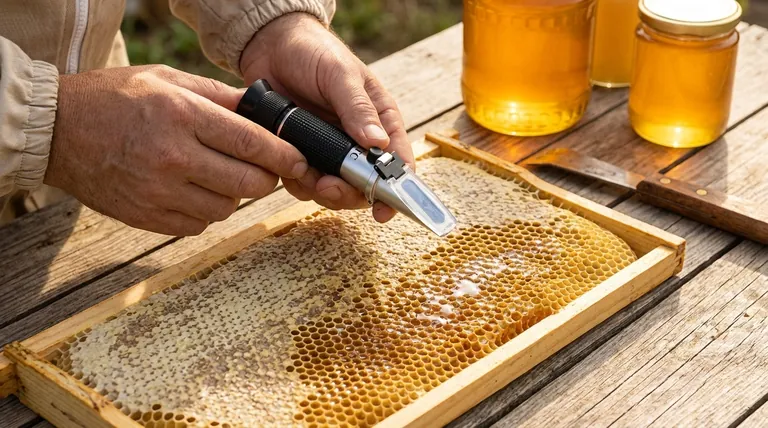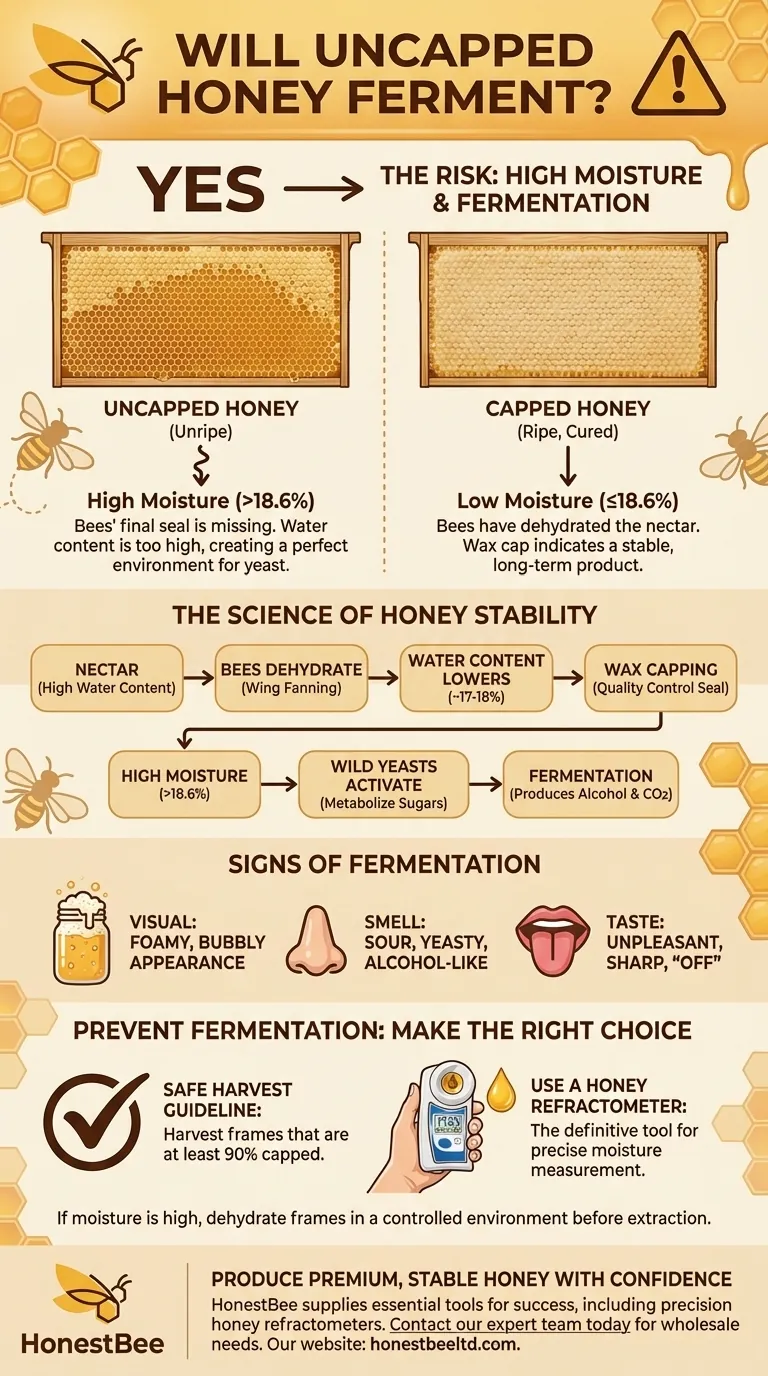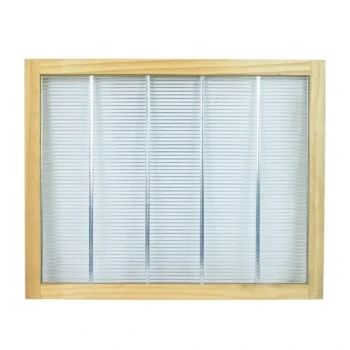Yes, uncapped honey has a significant risk of fermenting. This is because the wax caps are the bees' final seal, indicating they have dehydrated the nectar to a moisture content low enough to prevent spoilage. Uncapped honey is "unripe" honey, meaning its water content is often too high, creating the perfect environment for yeast to thrive and initiate fermentation.
The critical factor for honey stability is not the cap itself, but the water content. Honey with a moisture level above approximately 18.6% is vulnerable to fermentation, and uncapped honey almost always exceeds this threshold.
The Science of Honey Stability
Water Content: The Deciding Factor
Honey is primarily a supersaturated solution of sugars, but it also contains water. To make it shelf-stable, bees actively dehydrate the nectar they collect, fanning their wings to evaporate moisture until it reaches a concentration of around 17-18%.
Only when this precise level is achieved do they cover the cell with a wax cap. This low water content creates a high osmotic pressure that kills or inhibits the growth of bacteria and yeast.
The Role of Wild Yeasts
All raw honey contains natural, sugar-tolerant wild yeasts (osmophilic yeasts). In properly cured honey with low moisture, these yeast spores remain dormant and harmless.
However, when the water content rises above that critical 18.6% mark, these yeasts become active. They begin to metabolize the sugars in the honey, producing alcohol and carbon dioxide as byproducts. This is the process of fermentation.
Capping as Nature's Quality Control
Think of a capped frame of honey as a finished, quality-assured product. The bees' capping behavior is a direct signal that the honey within is cured, dehydrated, and ready for long-term storage.
As a rule of thumb for beekeepers, a frame that is at least 90% capped is generally considered safe to harvest, as the small uncapped portion is unlikely to raise the overall water content of the batch to a dangerous level.
Understanding the Risks and Consequences
Signs of Fermentation
Fermented honey is easy to spot. The process creates carbon dioxide, which gives the honey a foamy or bubbly appearance, sometimes with a layer of froth on top.
You will also notice a distinct change in smell and taste. It will develop a sour, yeasty, or alcohol-like odor, and its flavor will be unpleasantly sharp and "off."
The Impact of High Moisture
Even if fermentation hasn't started, harvesting honey with high moisture content is a significant risk. It means the potential for spoilage is always present.
This high-moisture honey is unstable and cannot be sold as quality table honey. It will have a shorter shelf life and may begin fermenting in the jar weeks or months after being bottled.
Why Harvest Uncapped Honey?
Beekeepers may be tempted to harvest uncapped or "green" honey to get a harvest in before a pest arrives, to clear supers for another nectar flow, or simply out of impatience.
However, the risk of spoiling the entire batch almost always outweighs the benefit of an early harvest. Patience is a beekeeper's most valuable tool in producing quality honey.
Making the Right Choice for Your Harvest
To eliminate guesswork, a honey refractometer is the definitive tool. This device gives an instant and precise reading of the water content in a honey sample, allowing you to know with certainty if your honey is stable and safe to extract.
- If your primary focus is premium quality and long-term storage: Exclusively harvest frames that are at least 90% capped and, for complete certainty, verify the water content is below 18.6% with a refractometer.
- If you have harvested partially uncapped frames: Keep them separate from your main harvest. You can use a dehumidifier in a small, sealed room with the supers to help lower the water content before extraction, but you must measure the progress with a refractometer.
Ultimately, trusting the bees' judgment and verifying their work are the keys to a perfect, stable honey harvest.

Summary Table:
| Factor | Why It Matters |
|---|---|
| Wax Cap | A bee's signal that honey is cured and moisture is low (<18.6%). |
| High Moisture (>18.6%) | Creates an environment where wild yeasts become active, causing fermentation. |
| Signs of Fermentation | Bubbles/foam, sour or yeasty smell, sharp taste. |
| Safe Harvest Guideline | Harvest frames that are at least 90% capped. Use a refractometer for certainty. |
Produce Premium, Stable Honey with Confidence
Don't let fermentation risk spoil your hard work. HONESTBEE supplies commercial apiaries and beekeeping equipment distributors with the essential tools for success, including precision honey refractometers to accurately measure moisture content.
Contact our expert team today to discuss your wholesale needs and ensure every harvest meets the highest quality standards.
Visual Guide

Related Products
- Precision Honey Refractometer Instrument for Quality Assessment
- HONESTBEE 3-Frame Manual Acrylic Honey Extractor
- 0.5T Capacity Honey Dehumidifier Dryer with Vacuum Heating and Thickening Filtering Machine
- 6 Frame Manual Stainless Steel Honey Extractor Beekeeping Equipment
- Plastic Hand Crank 2 Frame Honey Extractor Low Price
People Also Ask
- What is a honey refractometer? The Essential Tool for Perfect Honey Quality
- What is a honey refractometer and what is its purpose? Ensure Honey Quality and Prevent Spoilage
- What are the benefits of using a Pocket Digital Honey Refractometer? Achieve Precision & Speed in Honey Quality Control
- What are the key steps to using a honey refractometer? Ensure Honey Quality & Prevent Fermentation
- What are the key points for proper usage of a honey refractometer? Ensure Accurate Moisture Readings Every Time



















